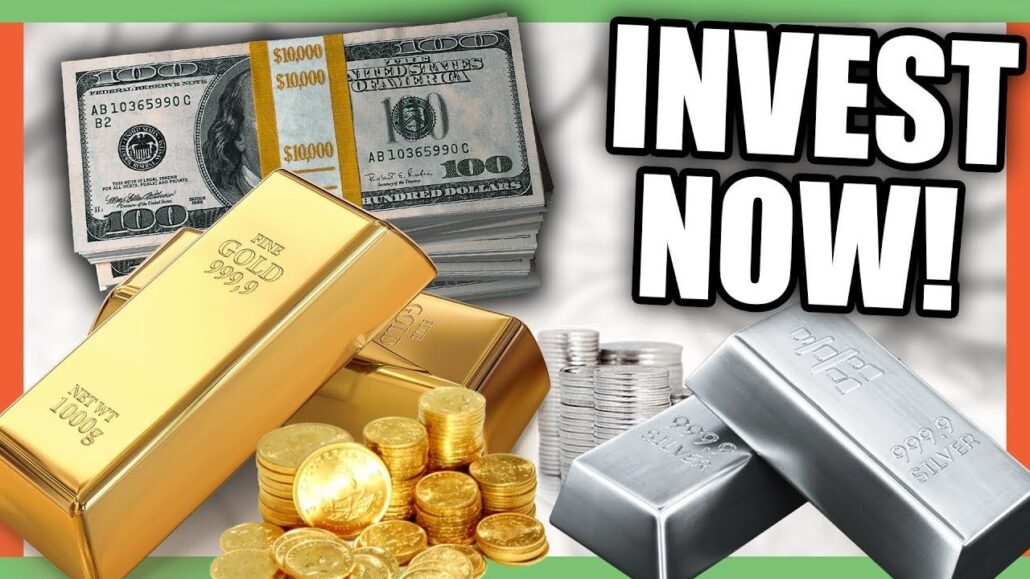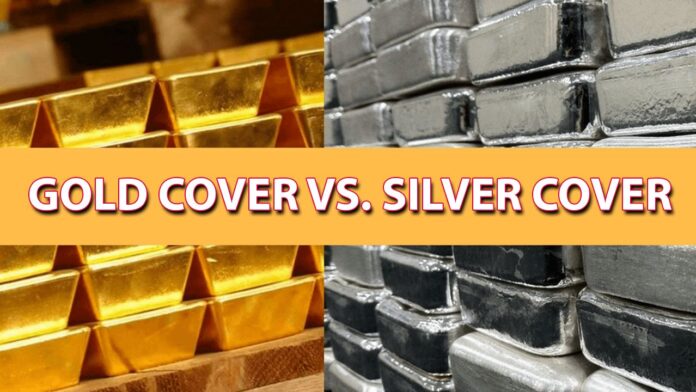Investing in Silver versus Gold entails understanding the differences in market dynamics, industrial applications, and historical significance. Factors like price volatility, accessibility, and investment goals influence decisions. Each metal offers distinct benefits and drawbacks, impacting portfolio diversification and risk management strategies.
The Differences Between Silver and Gold
Silver and Gold, two precious metals revered for centuries, have distinct characteristics that set them apart. Silver, known for its affordability and versatility, finds wide usage in jewellery, electronics, and industrial applications.
Its lustrous shine and malleability make it a favourite among artisans. Conversely, prized for its rarity and enduring value, Gold is prominent in luxury items, investment portfolios, and ceremonial adornments.
Its warm hue and resistance to tarnish symbolize wealth and prestige. While both metals share historical significance and intrinsic worth, their unique properties cater to diverse needs and preferences, enriching our world with elegance and prosperity.
Composition and Characteristics
Silver and Gold are precious metals but have distinct physical and chemical properties. Silver is known for its lustrous appearance and high conductivity, making it valuable in various industrial applications, including electronics and photography.
On the other hand, Gold is prized for its rarity, malleability, and resistance to corrosion, making it a symbol of wealth and luxury.
Historical Significance and Uses
Silver and Gold have played crucial roles throughout history as currency and store of value. Silver has been used for coinage and jewellery since ancient times, while civilizations have revered Gold for its beauty and rarity.
Both metals are still used in jewellery but have industrial uses in technology, medicine, and aerospace sectors.
Investing in Silver
Investing in Silver offers a resilient hedge against economic uncertainty. Silver holds intrinsic value as a precious metal and is a tangible asset in diversified portfolios. Its industrial applications in technology and healthcare further bolster its demand.
Unlike fiat currencies, Silver maintains purchasing power over time, making it a reliable store of wealth. Additionally, its affordability compared to Gold makes it accessible to more investors.
With increasing global demand and finite supply, Silver presents promising growth potential.
Whether through physical bullion or silver-backed securities, incorporating Silver into investment strategies can provide stability and long-term gains.
Silver Market Overview
The silver market is more volatile and smaller than the gold market, with prices influenced by industrial demand, geopolitical tensions, and currency fluctuations. The price of Silver is typically more erratic than the price of Gold. Making it attractive to traders seeking short-term profits.
Factors Influencing Silver Prices
Several factors affect the price of Silver, including supply and demand dynamics, macroeconomic trends, and investor sentiment. Industrial demand for Silver in electronics and green energy technologies can drive prices higher, while economic downturns may lead to decreased industrial demand and lower prices.
Pros and Cons of Investing in Silver
Silver investment offers the potential for high returns due to its volatility and industrial demand. However, silver prices can also be influenced by factors outside investors’ control, such as changes in government policies or technological advancements.
Investing in Gold
Gold investment has long been considered a prudent strategy for diversifying a financial portfolio. As a tangible asset, Gold is a hedge against inflation and economic uncertainty.
It’s a dependable store of money because its value usually increases when other investments do not. Investors often turn to Gold, seeking stability and security during market volatility or geopolitical instability.
Additionally, Gold offers liquidity, as it can be easily bought and sold worldwide. While the price of Gold can fluctuate, its enduring appeal as a haven asset remains steadfast, making it a valuable component of any investment strategy.
Gold Market Overview
Gold is often considered a safe-haven asset, prized for its intrinsic value and stability during economic uncertainty. The gold market is bigger and more liquid than the silver market, with prices influenced by inflation, interest rates, and geopolitical events.
Factors Influencing Gold Prices
Several factors, including central bank policy, influence the price of Gold. Currency movements and investor demand. During economic turmoil or inflationary pressure, investors often flock to Gold as a store of value, driving prices higher.
Pros and Cons of Investing in Gold
Investing in Gold provides diversification and protection against inflation and currency devaluation. However, gold prices can be relatively stable compared to Silver, limiting its potential for short-term gains. Additionally, storing physical Gold can incur additional costs and logistical challenges.
Investing in Silver vs. Gold?
The debate between investing in Silver versus Gold is a timeless one. Both metals have unique allure and advantages, giving them appealing choices for portfolio diversification seekers among investors.
A common belief is that Silver is the “poor man’s gold,” valued for its affordability and industrial applications. It tends to be more volatile than Gold, offering potentially higher returns but with increased risk.
On the other hand, Gold is renowned for its stability and long-term store of value. It’s often considered a haven during economic uncertainties, resulting in risk-averse investors favouring it.
Ultimately, the decision between silver and gold investing depends on individual goals, risk tolerance, and market conditions. Some investors may opt for the potential growth of Silver, while others prefer the stability of Gold.
Whichever metal you choose, thorough research and careful consideration are key to making informed investment decisions.
Comparing Silver and Gold as Investments

Silver and Gold are often viewed as stable assets. With its timeless allure, Gold has historically been considered a haven during economic turmoil.
Its scarcity and enduring value make it popular for investors seeking wealth preservation. On the other hand, Silver is prized for its industrial applications and role as a store of value.
While Gold tends to be more stable, Silver can offer higher volatility and the potential for greater returns. Both metals have their merits, with Gold favoured for its stability and Silver for its versatility in investment portfolios.
Price Volatility and Stability
Silver prices tend to be more volatile than gold prices, making it suitable for investors with a higher risk tolerance. Conversely, Gold is prized for its stability and acts as a hedge against market fluctuations and economic uncertainty.
Industrial vs. Monetary Value
Silver has significant industrial applications, making it vulnerable to changes in global manufacturing and technology sectors. Gold, however, is primarily valued as a monetary asset and store of wealth, with less dependence on industrial demand.
Accessibility and Affordability
Because Silver is less expensive per ounce than Gold, it is more accessible and economical for small investors. Retail investors now find it simpler to enter the market and assemble a diverse portfolio of precious metals.
Investment Considerations
There are several key considerations to keep in mind. Understanding your risk tolerance is crucial; It determines the level of volatility in your portfolio that you can tolerate.
Next, consider your investment goals—are you looking for long-term growth or short-term gains? Additionally, research is essential.
Whether stocks, bonds, or real estate, thorough research can help you make informed decisions.
Diversification is another vital factor; Investing across various asset classes can help reduce risk.
Lastly, keeping up with economic and market trends will help you make wise investment choices on time.
Supply and Demand Dynamics
In the Silver vs. gold debate, understanding supply and demand dynamics is paramount.
Gold’s limited supply and consistent demand contribute to its enduring value, with central banks, institutional investors, and individuals hoarding the precious metal as a hedge against economic instability.
Conversely, Silver’s industrial applications introduce additional demand factors as technological advancements and green initiatives drive consumption across diverse industries.
Market Volatility and Risk Management
As with any investment, risk management is crucial when investing in Silver or Gold. While Gold’s historical stability offers a degree of reassurance, its prices can still fluctuate in response to macroeconomic factors and market sentiment.
On the other hand, Silver tends to exhibit greater price volatility due to its industrial demand and smaller market size.
Investors must weigh these factors carefully and implement risk mitigation strategies to safeguard their portfolios against unforeseen market fluctuations.
Conclusion
Where can Investing in Silver vs. Gold, Investors have an exceptional opportunity to diversify their portfolios and protect themselves from economic uncertainty with Silver and Gold. While Silver may provide higher volatility and potential for short-term gains, Gold offers stability and protection against market fluctuations. Choosing between Silver and Gold ultimately depends on your investment goals, risk tolerance, and long-term outlook.
FAQ
Which is Better to Invest in: Silver or Gold?
Silver has a weak positive correlation with stocks, bonds, and commodities, making it a decent portfolio diversifier, but Gold has shown to be more potent. But Gold is thought to be a more potent diversifier.
What is The Best Place to Buy Gold or Silver?
Some of the most trustworthy and well-known gold dealers include JM Bullion, American Precious Metals Exchange (APMEX) and American Hartford Gold.
Does Warren Buffett Invest in Gold or Silver?
Warren Buffett has been vocal that he feels Gold lacks value because it lacks usefulness. As Buffett practices it, a key principle of value investing says you should only invest in things that serve some practical purpose. Silver has myriad uses, and Buffett has invested nearly $1 billion.
Should I Buy Gold or Silver 2023?
During economic downturns, investors often turn to Gold for liquidity. On the contrary, Silver is more closely tied to the overall economy due to its industrial applications. When economic activities slow down, the demand for Silver in manufacturing decreases, affecting its price.
Is Silver More Profitable Than Gold?
It is evident that in bull markets, Silver climbs much more than Gold, and in downturn markets, it falls far more than Gold. Hence, history indicates that if you invest in Silver during a bull market, you will likely receive a larger return than in Gold—possibly by a significant amount.



